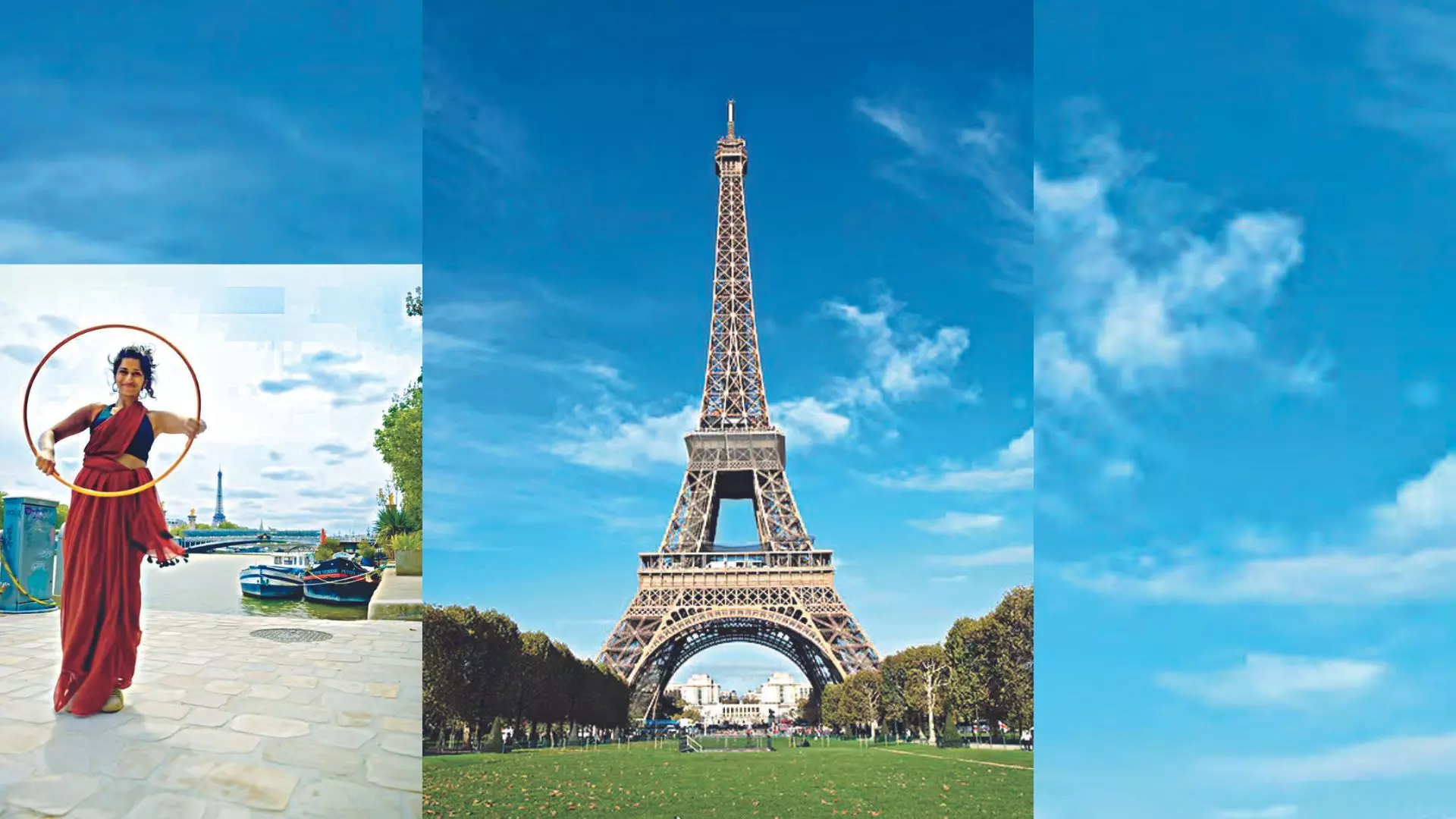Netizens Don Desi Avatars For Olympics
Hundreds join the #LetsMoveIndia campaign to blend traditional Indian clothes (dhoti, mundu, kurta, lehengas, saree, pajama) and modern fitness trends

While Team India puts their best foot forward at the 2024 Paris Summer Olympics, many individuals are partaking in the #LetsMoveIndia Campaign and sharing their workout photos and videos in traditional Indian attire. From gym rats to yoga gurus, dancers to homemakers and wrestlers, many are wearing dhotis, kurtas, sarees, and other traditional dresses while dancing, playing a sport, or working out to show their support for Team India at the Olympics. In a matter of days, #LetsMoveIndia campaign has become a gargantuan success.
Sarees, kurtas, mundus, and dhotis can be styled in numerous ways to suit different occasions and activities. Whether it’s for a casual day out, a formal event, or even a workout session, these garments offer unmatched comfort. Fabrics like cotton, linen, and silk are not only breathable but also adaptable to various climates, making them ideal for everyday wear. “I have seen elderly ladies at the park dressed in kurtas, sarees, a tracksuit, and dupattas. They wear it for comfort, prioritize their health, and are not bound to body-hugging activewear,” says sportswoman Deepa Malik, India's first female Paralympic medallist. “When we see the colours of our flag on us, it brings an immense sense of pride,” adds Malik.
A Perfect Blend
Women from the Middle East have seamlessly blended their traditions by wearing long T-shirts over their attire, maintaining both modesty and freedom of movement, highlights Malik. The #LetsMoveIndia campaign has inspired many to explore their cultural roots while staying active and healthy. It’s a celebration of India’s rich textile history, showcasing how traditional fabrics and designs can be adapted to meet modern needs.
“Some athletes have always adhered to traditional attire without compromising on comfort. The key is to ensure that the clothing does not restrict movement, and intricate embroidery can add both aesthetic appeal and cultural significance,” says Malik.
While dancing online has the power to entertain and educate, it's not just about putting on some music and swaying to the beat; it's about supporting your country. “Seeing traditional outfits like the kurta or saree being adapted for fitness activities is inspiring, we are finally getting the representation that we missed out on,” says Ariana D'souza, a graduate. Some may think it’s just a game day thing, a surge when one is playing for a win.
Traditional dancers, yoga instructors, and fitness trainers are collaborating to create content that celebrates both the beauty of Indian attire and the benefits of physical activity. This collaboration has led to innovative and inspiring content that showcases the versatility and elegance of traditional clothing in a new light.
Previously, sarees, lehengas, dhotis, and kurtas varied across different regions of India, emerging with intricate weaving techniques and natural dyes to create beautiful, vibrant colours. India’s diverse geography and cultural landscape have given rise to a plethora of regional clothing styles, from the Jamdani saree in West Bengal to Kolhapuri chappals in Maharashtra.
Excellent Craftsmanship
Indian fashion has always been rich in history and craftsmanship. Today, designers and fashion enthusiasts are reimagining these traditional garments for modern-day activities.
A 2022 Yoga Journal report reveals that 23% of Indian yogis have embraced traditional attire, like kurtas and sarees, for their practice. Shaina NC, fashion designer cum politician suggests that sports stars and celebrities promote traditional attire in fitness, challenging stereotypes, and celebrating India’s diverse heritage through chic and practical attire. “The saree is a great symbol for us moving forward, reflecting how the world has become one. In this context, it’s all about amalgamation, and India is renowned for its fabrics and weavers,” says Shaina. This amalgamation is not just about aesthetics but also about functionality. The ease with which modern wearers can drape and move in these garments is a testament to the adaptability of traditional designs. For instance, many modern sarees now come with pre-stitched pleats and adjustable petticoats, making them more accessible for everyday wear and athletic activities.
Traditionally, gym-goers stick to moisture-wicking tees and stretchy leggings, but imagine trading those for a breezy kurta or a flowing saree. While T-shirts keep you cool and shorts let you move, kurtas offer a unique, comfy twist to your workout. Perfect for yoga or a gentle stretch, just ensure the fabric breathes as freely as you do! Traditional clothing can be adapted with pre-stitched pleats, adjustable drapes, and a comfortable fit for exercise and movement.
By integrating traditional attire into modern fitness routines, we not only embrace comfort but also celebrate our cultural heritage on an international stage. Some athletes have always adhered to traditional attire without compromising on comfort. The key is to ensure that the clothing does not restrict movement.” — Deepa Malik, India's 1st female Paralympic medallist
Super Fit
• 5% of Fit Bharat participants are more comfortable in traditional attire
• 90% of yoga practitioners find traditional attire comfortable for yoga
• 23% of Indian yoga practitioners use traditional attire like kurtas and sarees (Yoga Journal, 2022)
Comfort is key, and we need to showcase our tradition at these gloabal games.” — Shaina NC, fashion designer and politician

